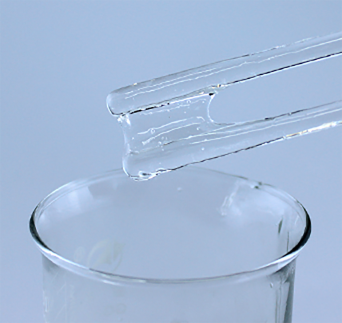
ਦਸੰ. . 05, 2024 14:06 Back to list
hydroxy methyl propyl cellulose
Understanding Hydroxy Methyl Propyl Cellulose Applications and Benefits
Hydroxy Methyl Propyl Cellulose (HMPC) is a non-ionic, water-soluble polymer derived from cellulose, a natural polymer found abundantly in plants. This versatile compound has gained significant attention in various industries due to its unique properties, including its ability to form gels, thicken liquids, and stabilize emulsions. In this article, we will explore the characteristics, applications, and benefits of HMPC across different sectors.
Chemical Structure and Properties
HMPC is synthesized by the modification of cellulose through the reaction with propylene oxide and methyl chloride. The resultant polymer features hydroxyl groups that increase its solubility in water. The degree of substitution of the hydroxy and methyl groups dictates its physical and chemical properties, such as viscosity and gel formation capacity. This makes HMPC a highly customizable compound for different applications.
One of the key characteristics of HMPC is its rheological properties, which allow it to behave as a thickening agent in low concentrations. The ability to form viscous solutions means that HMPC can improve the texture and stability of products. Moreover, HMPC is thermally stable, which enables it to maintain its viscosity over a range of temperatures, making it suitable for various formulations.
Applications in Various Industries
1. Pharmaceuticals In the pharmaceutical industry, HMPC is widely used as a binder and thickening agent in tablet formulations and liquid medications. Its ability to improve the flowability of powders and ensure uniform distribution of active ingredients enhances the efficacy of drugs. Additionally, HMPC is employed in controlled-release formulations, wherein it helps in the gradual release of the active ingredients over time.
2. Food Industry HMPC serves as a food additive, recognized for its ability to enhance texture and stability in food products. It plays a vital role in thickening sauces, dressings, and dairy products, providing a creamy mouthfeel without altering flavor profiles. As an emulsifier, HMPC stabilizes oil and water mixtures, preventing separation and enhancing the overall quality of processed foods. Its versatility aligns with the growing demand for gluten-free options, as it aids in maintaining viscosity and texture in gluten-free baked goods.
hydroxy methyl propyl cellulose

3. Cosmetics and Personal Care In cosmetics, HMPC is used for its thickening, emulsifying, and film-forming properties. It provides a desirable texture in creams, lotions, and gels while helping to stabilize formulations. The compound is also valued for its skin-conditioning properties, making it suitable for various personal care products, including moisturizers and sunscreens. Moreover, HMPC's non-irritating nature renders it compatible with sensitive skin formulations.
4. Construction The construction industry has recognized HMPC for its excellent water retention and workability, particularly in cement and gypsum products. When added to mortars and plasters, it enhances adhesion, reduces cracking, and improves the overall performance of construction materials. HMPC's ability to retain moisture prolongs the curing time, which is crucial for achieving durable structures.
Benefits of Hydroxy Methyl Propyl Cellulose
The use of HMPC offers several benefits across its applications. Firstly, it is a biodegradable and environmentally friendly material, making it an attractive choice for manufacturers seeking sustainable alternatives. Moreover, its versatility and ease of use allow for seamless integration into various formulations.
Furthermore, HMPC can enhance the overall sensory experience of products. In cosmetics, it improves the feel of creams and serums, while in food, it provides a smooth and appealing texture. Its role in stabilizing formulations ensures a longer shelf life, contributing to reduced food waste and improved product efficacy.
Conclusion
Hydroxy Methyl Propyl Cellulose stands out as a multifunctional polymer with a wide range of applications across industries, including pharmaceuticals, food, cosmetics, and construction. Its unique properties, such as water solubility, thickening ability, and stability, make it an essential ingredient for enhancing product quality. As industries continue to innovate, HMPC is likely to play a pivotal role in the development of new formulations and sustainable products, aligning with the demands of modern consumers and environmental consciousness. Whether you're a health-conscious individual or an industry professional, understanding HMPC's significance sheds light on the advancements being made in product formulation and development.
-
The Widespread Application of Redispersible Powder in Construction and Building Materials
NewsMay.16,2025
-
The Widespread Application of Hpmc in the Detergent Industry
NewsMay.16,2025
-
The Main Applications of Hydroxyethyl Cellulose in Paints and Coatings
NewsMay.16,2025
-
Mortar Bonding Agent: the Key to Enhancing the Adhesion Between New and Old Mortar Layers and Between Mortar and Different Substrates
NewsMay.16,2025
-
HPMC: Application as a thickener and excipient
NewsMay.16,2025
-
Hec Cellulose Cellulose: Multi functional dispersants and high-efficiency thickeners
NewsMay.16,2025







